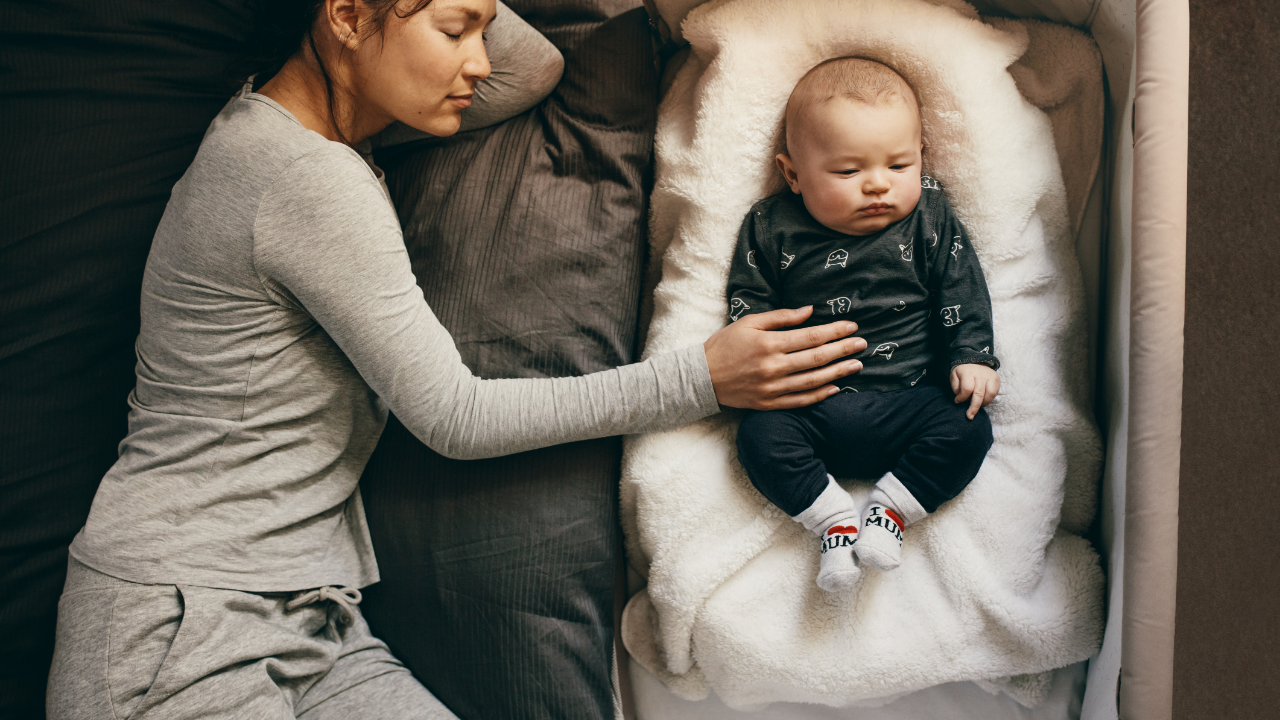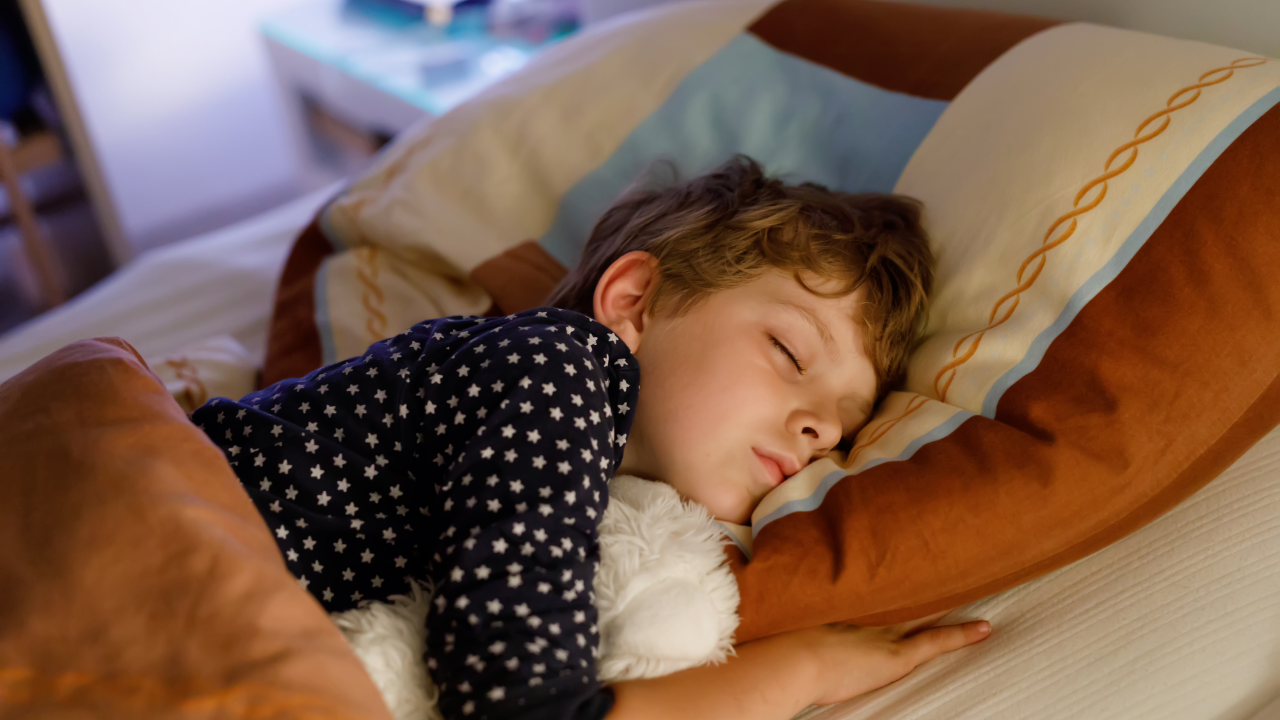10 Tips to Build a Better Bedtime Routine
Remember those chaotic days when your baby knew no difference between days and nights. It appeared that you wouldn’t get past this phase of sleeplessness and overwhelm.
But you did!
Those days are over now and you can get some sleep at night. Still, this sleep is not enough. You want more peace. The good news is that you can have it.
The key lies in empowering our children to be more independent. And empowering independent yet sound and healthy sleep in your children is just one favor you can do to yourself.
So, how do you do it?
Here is the complete guide:
Start Early
The first intervention you made into your baby’s sleep/wake cycle is when you taught them the concepts of day and night.
In later months and years, you have to add sophistication to meet the age-appropriate needs of your child. Make sure that you are putting your child to sleep on his own from an early age. Ensure them your presence but encourage them to sleep without cuddling with you.
Know that young children and babies can sleep independently – when they are assured – from a young age. Let them build on this strength.
Assure Them Your Presence
If you are encouraging your child to sleep separately for the first time, you may experience resistance. The kid may try to elongate the bedtime routine and may try to stay awake for longer than what you want to allow. While it’s okay to tend to their needs, know the difference between needs and excuses. Encourage adhering to bedtime strictly so their circadian rhythm can know the pattern.
Some other children may cry before sleeping to resist sleeping separately. It’s okay. However, if they don’t calm down within minutes, intervene. It’s more important for them to know that you’ve got their back than to have a well-established sleep routine.
Stay with them and encourage them to remain in bed. Don’t let crying into an excuse to get out of bed.
Once they are calmed down, you can again encourage them to sleep independently.
Know Their Age-Appropriate Sleep Needs
Toddlers need between eleven and fourteen hours sleep every day; while, preschoolers need between ten and thirteen hours sleep.
You have to divide this sleep into one nap time and one full night sleep.
It’s anticipated from children to try to avoid naps during the day. It’s understandable as they don’t want to skip on the fun. But daytime naps work like a charm to bring balance between their activity and rest and prevent them from getting too worked up in the evening to hinder bedtime routine.
It also allows the preschooler to recharge their batteries to have even more fun.
You should also note that your child might be wired to get fewer hours of sleep by nature or her sleep schedule might be regulated as such because of less physical activity she packs on during the day. In such cases, prompting her to stay in bed for longer hours will only frustrate her.
Make sure to allow the kid to start moving as soon as she is out of bed in the morning or evening.
Be Consistent
The best and proven method to empower children to sleep by themselves is creating a routine around sleeping hours. Once synchronized, humans’ circadian rhythm works independently of a visual, auditory, or behavioral cue.
Children’s rhythm is just as efficient as adults’. Once their sleep cycle has built around sleeping at eight o’clock in the evening (or whatever is the right time according to you), they will start feeling sleepy near that time.
The only catch is that most children can’t tell the difference between sleepiness and anger or confusion.
The emphasis on bedtime routines is meant to help them with this differentiation. We give them different cues through changes in light, activity levels, and the nature of the activity to tell them they need sleep.
These routines are great and are a necessary part of the whole process. But should I tell you what is even better? It’s telling them the signs of sleepiness.
You might argue that your child is too young to understand these signs. And you might be right. But you can start as soon as you find that they have the slightest understanding of their emotions and physiology.
Next, we shall consider a few steps of an effective bedtime routine.
Allow Time to Slow Down
This is the first cue that signals impending sleep time to children. It includes stop using screens, using dimmer lights, and avoiding intense physical activity.
Let them do some relaxing tasks including arts for expression of emotions and thoughts. Once they have detached from the physical fun they were having and have unloaded their mental burden on paper or listeners, they will start looking forward to a resting sleep.
This lowered activity level allows the child’s brain to stop signaling alertness. This lack of alertness signals from the brain is facilitated by lowered body temperature and shallower breathing. All these signs contribute to the body’s urge to go to bed.
Thankfully, if you have coupled lower physical activity with the visual cue of dimmed lights, your child will be able to recognize her bodily signs and want to go to bed. Things get tricky when the environment is noisy and bright.
You may also want to offer them a bedtime snack. If you do, avoid caffeine and chocolate.
Remind Them to Use the Washroom
It’s a common-sense tip, isn’t it?
You don’t want them to wake up in the middle of the night only to go to the loo. Also, their urge to pee can hinder their ability to quickly fall asleep.
Plus, going to the loo also acts as a signal for the start of the bedtime routine.
Include Hygiene Routine
It should be around oral and dental hygiene as well as washing hands and face or taking a bath.
Let Them Choose
The bedtime routine factors we have mentioned above will have temporary effects on your child’s sleep pattern. If you want lasting results and a self-disciplined kid, you should empower them over this routine.
There are some simple ways to do this.
You can start by giving visual signals for this control. Examples of visual controls include allowing them to choose the pajamas they will wear and the parent they will talk to before sleeping. You may also prompt them to choose an un-winding activity before starting the hygiene ritual.
Allowing them to choose one snack from a few options you have offered them is another way to give them a sense of control.
Giving them the power of choice is just one method to the true empowerment of children. Another method is to give them the power of expression.
Let Them Talk
Children are not very different from adults. Like adults, they too absorb their environment and take emotions from it. They also get tired of their activities. And they also need time to reflect on their days and their behavior.
Self-reflection not only acts as a key to higher emotional intelligence, but it also supports your kids in freeing themselves from the emotions attached to the events that happened during the day.
Once they have unloaded this stuff, they can prepare themselves for a good night’s sleep.
You can offer them the option of journaling or you can let them share their feelings with you to unwind. Make sure they are the ones who choose their medium of expression.
Allow Them to Sleep on Their Own
If they are old enough and have built their choices, you can include them in decorating their bed/ room. This step will give them an immense sense of ownership.
Once you have transferred the ownership, you can use this sense of ownership to encourage them to use their bed for sleeping.
Another step towards transition is giving them a blanket or stuffed toy to use as a security object.
In the presence of these objects and the sense of ownership, if they want to leave their bed, encourage them to stay put. However, leave room for deviations in case your kid is scared or needs some help with sleeping occasionally.
Wrap Up
Developing a bedtime routine and independent sleeping pattern is not a single day’s job. You have to be consistent and firm. At the same time, you have to be empathetic.
Encouraging your children to sleep independently is more about empowerment and less about routines and cues.
Talk to them. Let them feel heard so they can hear themselves.
Give them the power of expression. Once they can express their internal world, they are more equipped to follow the routines of their outer world.
Thank you for Reading!
Get your Free Sleepy Head Activity Book when you subscribe to our Weekly Newsletter and be the first to know when we have new contents and freebies!



















